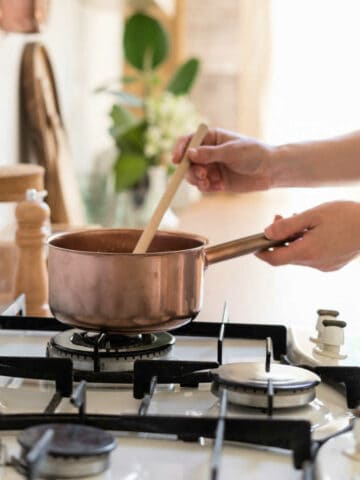Kidneys, bones, blood pressure, and heart health are just some of the things affected by sodium. Knowing the benefits of a low sodium diet make it worth implementing into your everyday life!

Benefits of a low sodium diet
Contrary to popular belief, sodium is necessary for the body to fulfill a number of vital functions. It is recommended that the human body consumes 500mg of sodium per day, with Harvard School of Medicine's feature on sodium highlighting that it uses it to conduct nerve impulses, contract and relax muscles, and maintain the right balance between water and minerals. However, it’s estimated that most Americans consume approximately 3,400mg of sodium each day, which far exceeds the amount the body actually needs.
One of the main reasons sodium is a major concern for American households is because a lot of typical American meals are full of processed foods and extremely heavy on salt. In some of the posts on SymptomFind, they note that salt is often added as a preservative, making sodium very common in processed foods. This includes cured meats, cheeses, packaged vegetable juices, and even salad dressing, which all play a large part in the average American’s diet.
Health benefits of consuming a low sodium diet
It goes without saying that consuming too much sodium could have a detrimental effect on the body. This includes higher blood pressure, an increased risk of kidney stones, and poor heart health. These factors can be avoided by regulating how much salt-rich foods we eat. So to counter these potential issues, we’ve listed a few science-backed benefits of following regulating how much sodium you have in your diet.
1. Reduces Risk of Kidney Failure
In one of the many articles on Action on Salt about the effects of salt on our health, they explain that the kidneys are responsible for filtering out water in the blood. Balancing out potassium and sodium helps this process. However, when there’s too much sodium in the body retaining fluid, the kidneys become less effective at removing water. This sodium build-up can also cause hypertension and injury to the kidneys.
Sodium also depletes the body’s calcium stores. This is mainly because sodium and calcium are regulated by the same molecule in the body. Thus, when the body expels sodium in the urine, it takes calcium along with it. An excessive amount of calcium in the urine increases the risk of developing kidney stones. A low-sodium diet thus ensures that the kidneys maintain most of their functions.
2. Stronger Bones
Calcium is also necessary for maintaining bone mass. Sodium flushes out the calcium in the body, so an excessive amount can affect bone strength. A low-sodium diet reduces a vulnerability to bone demineralization and conditions like osteoporosis.
3. Lowers Blood Pressure
With excess sodium reducing the kidneys’ ability to remove water in the bloodstream, blood pressure increases, which can potentially damage your arteries. It also increases the risk of hypertension. This is when your blood pressure remains consistently high. As you get older, blood pressure naturally rises, so reducing your sodium intake can keep your blood pressure at a healthy level.
4. Improves Heart Health
When your blood pressure is high, your heart has to work harder. The walls of your heart end up thickening, thus reducing how effective it is at pumping blood around the body. If the heart becomes overwhelmed, it will gradually struggle to function properly. However, a low-sodium diet keeps the heart in good shape.
Conclusion
According to registered dietician Sonya Angelone, you can start your low-sodium diet by slowly reducing the amount of salt you consume. Try reducing your sodium intake by half. Then once you get used to the change, keep reduce the amount on a regular basis. This means reducing the amount of processed foods you eat and being mindful of the nutritional content you consume.
You can also try low-sodium dishes. For example, our Detox Kale Salad recipe shows you how to make a dish that needs little to no salt for it to be flavorful as the kale salad gets most of its zing from herbs like cilantro and a combination of strong-tasting fruits and vegetables, like avocados, garlic, and radish. Potassium-rich foods like broccoli also help, as they counteract sodium by relaxing blood vessels and decreasing blood pressure.
As you can see, consuming too much sodium creates a domino effect that starts to affect the kidneys and can lead to higher blood pressure and heart failure. Some effects can also worsen others — high blood pressure, for example, damages the blood vessels that lead to the kidneys, which then exacerbates kidney inefficiency. If you want to keep your body from entering this toxic cycle, you can detox from sodium with the help of a low sodium diet or adding salt to many dishes after the cooked.
I hope you enjoy this article on the benefits of a low sodium diet from Delightful Mom Food! Please leave a comment below and rating. Also follow along with me on INSTAGRAM, PINTEREST, FACEBOOK, YOUTUBE and TWITTER for recipe inspiration!






Leave a Reply